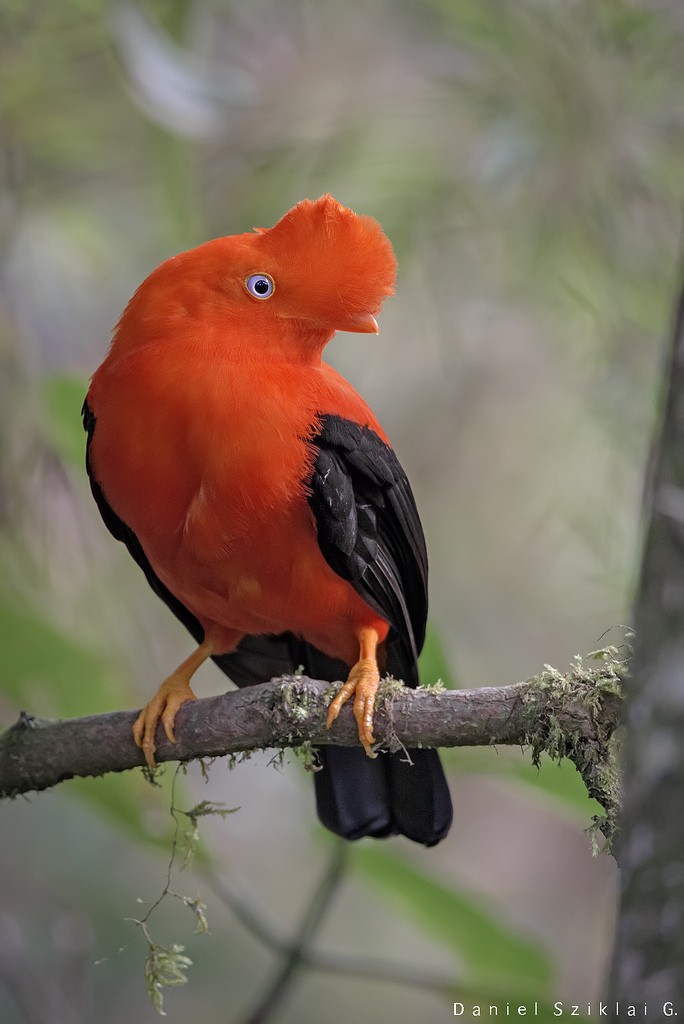The Andean cock-of-the-rock (Rupicola peruvianus) is a large, vibrantly colored passerine bird native to the cloud forests of the Andes Mountains in South America. It is known for its elaborate courtship displays, in which males gather at leks (communal display grounds) and perform elaborate dances to attract females. The Andean cock-of-the-rock is the national bird of Peru.

Taxonomy
The Andean cock-of-the-rock is a member of the family Cotingidae, which also includes other colorful birds such as toucans and bellbirds. The genus Rupicola contains two species: the Andean cock-of-the-rock and the Guianan cock-of-the-rock (Rupicola rupicola).

Description
The Andean cock-of-the-rock is a large bird, measuring around 32 cm (13 in) in length and weighing around 265 grams (9.3 oz). Males are significantly larger than females and have a more elaborate display crest. The males have a bright orange or crimson body with black wings and a large, fan-shaped crest. The females are dull brown with a smaller crest.
Distribution and habitat
The Andean cock-of-the-rock is found in the cloud forests of the Andes Mountains, from Venezuela to Bolivia. It prefers habitat with an abundance of moss and bromeliads, as these plants provide food and nesting sites.
Behavior
The Andean cock-of-the-rock is a social bird, and it is often seen in groups of up to 20 individuals. Males are polygynous, meaning that they mate with multiple females. Females are responsible for all of the parenting duties, including incubating the eggs and raising the chicks.
Diet
The Andean cock-of-the-rock is an omnivore, and its diet consists of fruits, insects, and small vertebrates. It forages for food in the trees and on the ground.
Conservation
The Andean cock-of-the-rock is classified as Near Threatened by the





